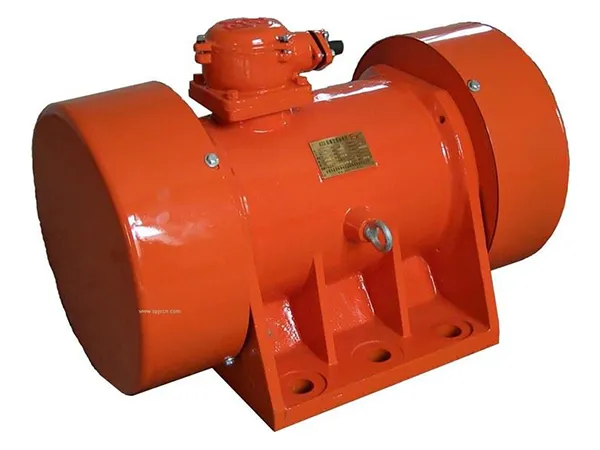time:Sep 07, 2024 source:ZEXCIT
Vibrating feeders are devices used to feed bulk materials continuously and uniformly to processing machines or conveyors. They are widely used in industries such as mining, metallurgy, coal, construction, chemical, and food processing. The specifications and models of vibrating feeders vary depending on the application, material to be handled, and desired capacity.

Capacity:
The capacity of vibrating feeders ranges from a few tons per hour (tph) to several hundred tph. Common capacities include 10, 50, 100, 200, and 500 tph, depending on the model and application.
Size of the Feeder Deck:
The width and length of the feeder deck can vary. Typical widths range from 300 mm to 3,000 mm, and lengths range from 600 mm to 6,000 mm.
Feeder Type:
Electromagnetic Vibrating Feeders: Ideal for smaller volumes and precise feeding applications.
Electromechanical Vibrating Feeders: Suitable for handling larger loads and for heavy-duty applications.
Grizzly Vibrating Feeders: These feeders have grizzly bars for separating fines and are used for handling materials with large lump sizes.
Vibration Frequency and Amplitude:
Frequency usually ranges from 750 to 3000 vibrations per minute.
Amplitude varies from 1 mm to 15 mm, depending on the material flow and feeder design.
Motor Power:
Motor power ranges from 0.5 kW to 15 kW or more, depending on the feeder size and capacity.
Material of Construction:
Made from various materials, such as carbon steel, stainless steel, and high-strength alloys, depending on the application and material to be handled.
Installation Type:
Available in stationary, mobile, or portable configurations depending on the setup and use.

Description: Utilize electromagnetic drives that produce a linear vibrating motion. The vibration is controlled via an AC supply, allowing for precise feeding rates and speed control.
Applications: Ideal for light to medium-duty applications requiring high precision, such as pharmaceuticals, chemicals, food processing, and packaging.
Advantages: Precise feed rate control, low maintenance, no mechanical parts subject to wear, suitable for fine materials.
Description: Driven by electric motors and eccentric weights or unbalanced motors that create a linear or circular vibratory motion.
Applications: Suitable for handling large quantities of bulk materials, such as in mining, quarrying, aggregate processing, and heavy industries.
Advantages: Robust construction, suitable for heavy-duty applications, higher capacity, and adjustable vibration intensity.
Description: Equipped with a set of grizzly bars or rods at the discharge end to screen out fines and smaller particles while feeding bulk materials.
Applications: Commonly used in primary crushing plants to scalp (remove) fines and bypass smaller materials before the primary crusher.
Advantages: Pre-screening capability, reduces load on crushers, heavy-duty design, suitable for handling large, heavy materials like rock and ore.
Description: Feature a flat pan or plate where material is conveyed by vibration. Can be used in horizontal or slightly inclined positions.
Applications: Suitable for uniform feeding of bulk materials to crushers, conveyors, and other processing equipment in mining, aggregate, and recycling applications.
Advantages: Simple construction, suitable for coarse materials, and uniform feeding without clogging.
Description: Designed with a tubular or enclosed structure that provides a dust-tight environment. Used for conveying dusty or fine materials.
Applications: Ideal for handling fine, dusty, or fragile materials in industries such as food processing, chemicals, pharmaceuticals, and plastics.
Advantages: Dust-tight design, prevents material contamination, protects operators from dust exposure, and provides gentle handling.
Description: Designed for accurate and controlled feeding of materials at low feed rates. Typically used with weigh belts or in batch processing.
Applications: Ideal for dosing small quantities of materials in chemical, pharmaceutical, food, and other precision-driven industries.
Advantages: High accuracy, suitable for small volumes, and low noise levels.
Description: Circular feeders that use vibration to orient and feed small parts in assembly lines, packaging, or sorting applications.
Applications: Common in automotive, electronics, pharmaceutical, and packaging industries for feeding small components such as screws, caps, and connectors.
Advantages: Compact design, automated feeding, part orientation, suitable for high-speed operations.
Description: Utilize a reciprocating motion to convey bulk materials. Typically used for heavy-duty applications.
Applications: Suitable for rough handling and feeding of large lumps in mining and mineral processing industries.
Advantages: Heavy-duty design, robust construction, and effective in handling abrasive and large materials.
Description: These feeders create a straight-line vibrating motion. Suitable for conveying materials in a linear path.
Applications: Often used for feeding granular materials, small parts, and fine powders in automated production lines.
Advantages: Compact, efficient, and suitable for precise linear feeding.

Choosing the Right Type of Vibrating Feeder
When selecting a vibrating feeder, consider the following factors:
Material Characteristics: Size, density, abrasiveness, moisture content, and flowability.
Capacity Requirements: Desired feed rate or throughput.
Application: Whether the feeder is for feeding, dosing, or pre-screening.
Environment: Indoor or outdoor use, temperature, and exposure to corrosive materials.
Maintenance: Ease of maintenance and availability of spare parts.
For detailed specifications, it is recommended to refer to the manufacturer's datasheets and consult with their technical team for the best-suited model for your specific application.

A hopper discharging system, also known as a hopper discharge system or hopper unloading system, is a mechanism used to efficiently and reliably empty or discharge materials from a storage hopper or bin. These systems are commonly used in various industries such as mining, agriculture, manufacturing, and bulk material handling.
READ MORE
A vibrating tube-type feeder, also known as a vibratory tube feeder or tube conveyor, is a specialized type of vibrating feeder used for conveying bulk materials in a tube-shaped structure. These feeders are commonly used in industries such as food processing, pharmaceuticals, chemicals, and plastics, where gentle handling of materials and sanitary conditions are essential.
READ MORE
Coal vibrating feeders are used to convey bulk materials from hoppers, silos, crushers, etc. in a wide range of applications including chemical, coal, foundry, quarrying and steel industries. The coal vibrating feeders produced by our company range in capacity from 100 tons/hour to 2500 tons/hour.
READ MORECopyright © 2023 Xinxiang Zongyuan Machinery Equipment Co., Ltd. | All Rights Reserved.